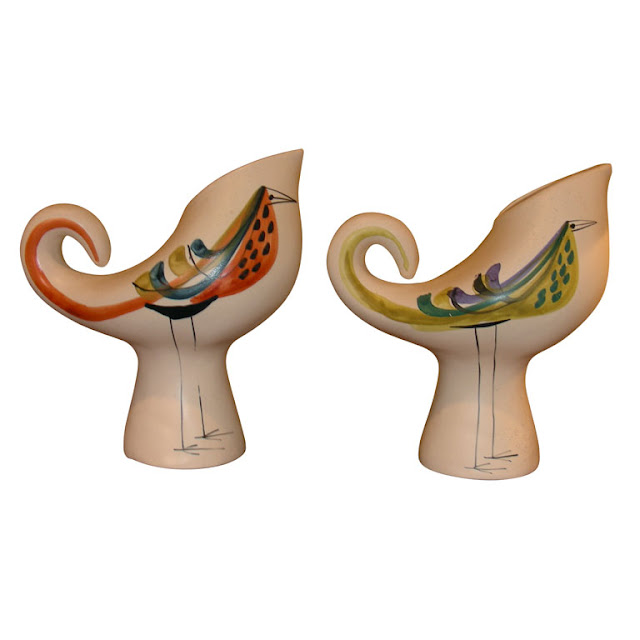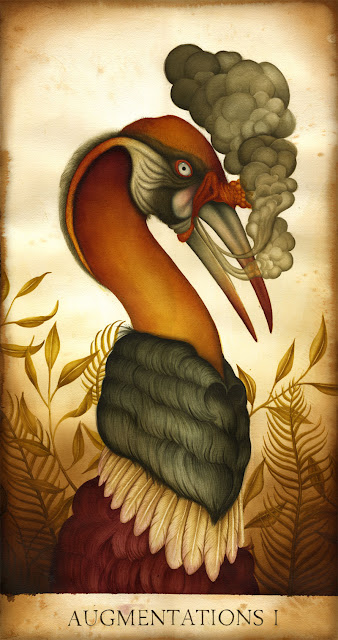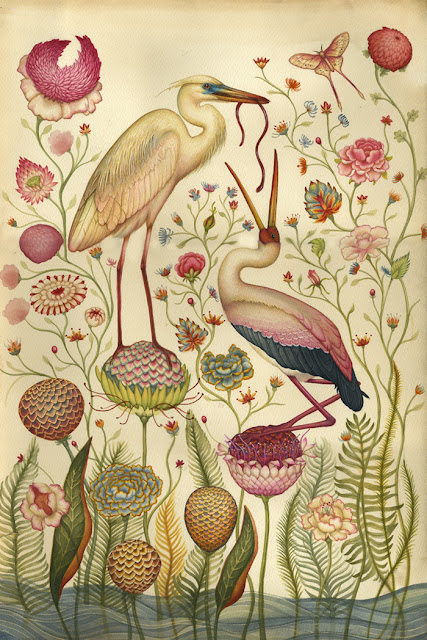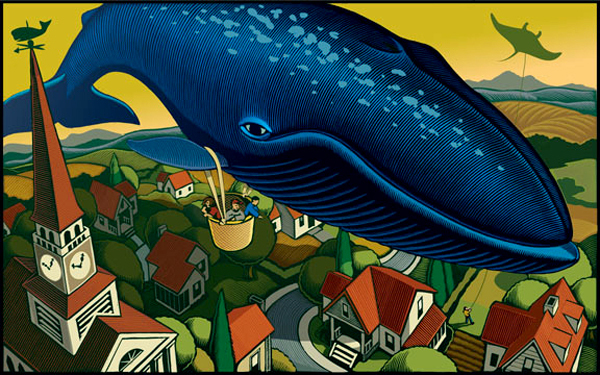La Bizarre Singerie
After much pondering and postponing, today I'm inaugurating a new series of posts featuring interviews with contemporary artists, illustrators and collectors. I am pleased and excited to begin with one of my favorite artists, the very talented Scottish painter Lindsey Carr. I find her work beautiful, interesting and fascinating and am glad to have discovered a bit more about what's behind it. Click on the pictures to view them larger!
Platonic Solids
I've read in an interview that you didn't go to art school; are you completely self-taught or did you receive some form of art training? In case you didn't, how did you develop your personal approach to painting? What were your main influences?
Well it's half and half - I went to college to do an A level after failing it the first time in secondary school. But after that I simply couldn't afford to spend 3 years without work. I developed my approach eventually after 10 years away from making art by reading manuals on painting and moving from very simple monochromatic illustrations to more complex ones. It took a few years to get to the point where I feel comfortable with a paintbrush. My main influences are the early print makers of natural history and the flower and bird paintings of China and Japan.
An Aurora of Polar Bears
The Flower House
Your paintings are a clear manifestation of your loving and attentive eye to animals and nature, but one can also perceive other less obvious narratives and layers of meaning. I am wondering what's the role of this conceptual aspect in the evolution of your imagery.
There are a few influences depending on the projects. Anglo-Chinese history was the focus of my LA show in 2011. The paintings were a mix of chinese and western influences. The recent show at Roq la rue had some paintings which were all about augmenting nature, making it 'better'.
At the moment i've moved back (between paintings) to programmatic art. I worked as a kind of programmer for many years and I was very interested in algorithms which mimicked the natural world. At the moment i'm trying to mix the painting with the output of these programs. This book was my first introduction to these ideas and the website will give you a better idea of what it's about; and this is an example of something I made on the back of it. You can mess about with the sliders and so forth and then just click the 'create' button (you need the flash player so it won't work on an ipad or iphone).
I think there has to be 'something' more going on in a piece of art for it to be interesting, whether it's a move forward with materials or concepts, whatever.
Dukkha
Gifts from the Red Barbarians
I have noticed that some animals such as kingfisher, herons, foxes and monkeys are often featured in your artworks. Do they carry a special symbolic meaning to you?
Well the monkeys really are a left-over from my family history. My grandad was a bit of a hobby artist and had a pet monkey when he was growing up (and other exotic animals) because his brother Jimmy was an animal-nut who worked in the merchant navy and brought them home. In any case, my grandad drew monkeys all the time which was fascinating to me as a kid.
Herons I love because of their insane reptilian looks. And foxes because I find their interaction with humans through history fascinating.
Your works are beautifully detailed and meticulously executed. Can you tell us a bit about your work process? How long does it usually take to complete a painting, and do you work on more than one painting at a time?
Well firstly, thank you! I first produce a sketch and then a drawing, I usually tend to do a few small colour studies before starting. I work in thin washes. I'm not what you'd call a loose or natural painter, i'm pretty cautious. From sketch to painting a small piece is probably 3-4 days, larger pieces take several weeks.
You've recently been exhibited in two important American galleries, Roq La Rue in Seattle and Thinkspace in LA. What are your dreams and aims at this point in your career as an artist?
Well, my aims in my work are really to hit a good mix of concept and rendering. And to extend myself a bit more, take a few more risks etc. Career-wise i've been very lucky to show with the galleries I have and hopefully will continue to be so! In reality - as with most artists - my dream is simply to make enough of a living to support my art-making.
Peacock
Finally, what is your relation with animals in real life? Do you have pets, or do otherwise manage to spend time around animals? Do you normally draw your creatures from nature or use photographs as a reference?
I do have a pet - a particularly ungrateful cat called Nacho who tears apart my furniture. Growing up I was nuts about horse riding and always had a dog. I lived for many years in the middle of nowhere which really in this country means on cultivated land for hunting. So, there were a lot of ground-nesting birds, deers, and of course - foxes. I rarely if ever draw from life - i'm a studio artist really - not comfortable working in the elements.
Many thanks to Lindsey for being so helpful and friendly. You can find her painting and toys (yes, she also makes fabulous wood and paper toys) on her website, and buy prints of her works at society6.
















+Jan+Kudla%CC%81c%CC%8Cek+AVK+fl.jpg)









































